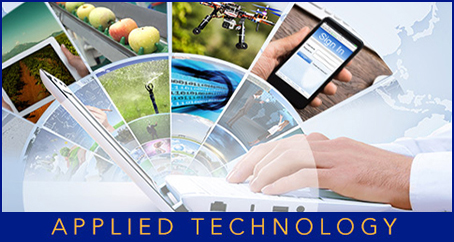There is an entire generation of digital natives who can’t imagine a world without the Internet, smartphones, or 24/7 connectivity. But it was just 26 years ago that a computer scientist unveiled the ultimate network, which he dubbed the World Wide Web, and made it available to the general public. Since then, technology has evolved at breakneck pace, with the Internet moving from dial-up to broadband and fiber, smartphones becoming the norm, and entire cities installing wireless hotspots so residents never have to feel disconnected or out of touch.
Among the more recent arrivals on this ever-changing technological scene is a concept known as the Internet of Things (IoT). Simply put, IoT is how connected or “smart” devices—smartphones, fitness devices and smart watches, thermostats, and cameras, to name a few—use cellular technology, software, sensors, and electronics to collect and share data.
Say, for example, you left the house in a hurry and don’t remember closing the garage door. With the swipe of a fingertip, your smartphone can access the control panel in your garage whether or not the door is open and then request the appropriate action. All without missing a single note of your son’s piano recital. These days, you can even use your smartphone to look inside the refrigerator and see if you have all the ingredients for Grandma’s famous marinara sauce. Why call home and ask someone to look when you can just peek for yourself?
Thanks to IoT technology, we can turn on the air conditioning, turn off the stove, or turn down the music from across the street or across town. There are smart homes, smart clothes, and smart cars. Even cities have jumped on the ‘smart’ bandwagon, using wireless technology and sensors to run traffic signals and streetlights, monitor air quality, and detect leaks in water mains, or send messages to drivers about parking and traffic issues and street closures. It’s the ‘smart’ era, and everyone, from small businesses to multinational players, is embracing it.
While the produce industry is often accused of being slow to adopt new technologies, it is proving to be among IoT’s biggest champions. Faced with ever-increasing consumer demand and a booming population, growers are looking at ways to boost productivity while also planting, harvesting, storing, and shipping more efficiently. In many cases, technology seems to be the solution; that’s where IoT comes in.
Automation In The Field
At Harvest CROO Robotics, the focus is on revolutionizing agriculture with automation. The Florida-based company is designing and building robots to pick strawberries, and after three years of prototyping is close to sending its first commercial alpha unit into the field.
The platforms that convey the robots will be enabled with IoT devices to map acreage with a GPS system so precise it can pinpoint the location of a plant down to a quarter of an inch. Moreover, every machine will be connected to the Internet and thus able to share harvest data—yields at the plant level and ripeness—on a daily basis. Even pest issues will be detected and reported.



